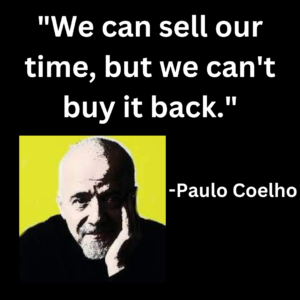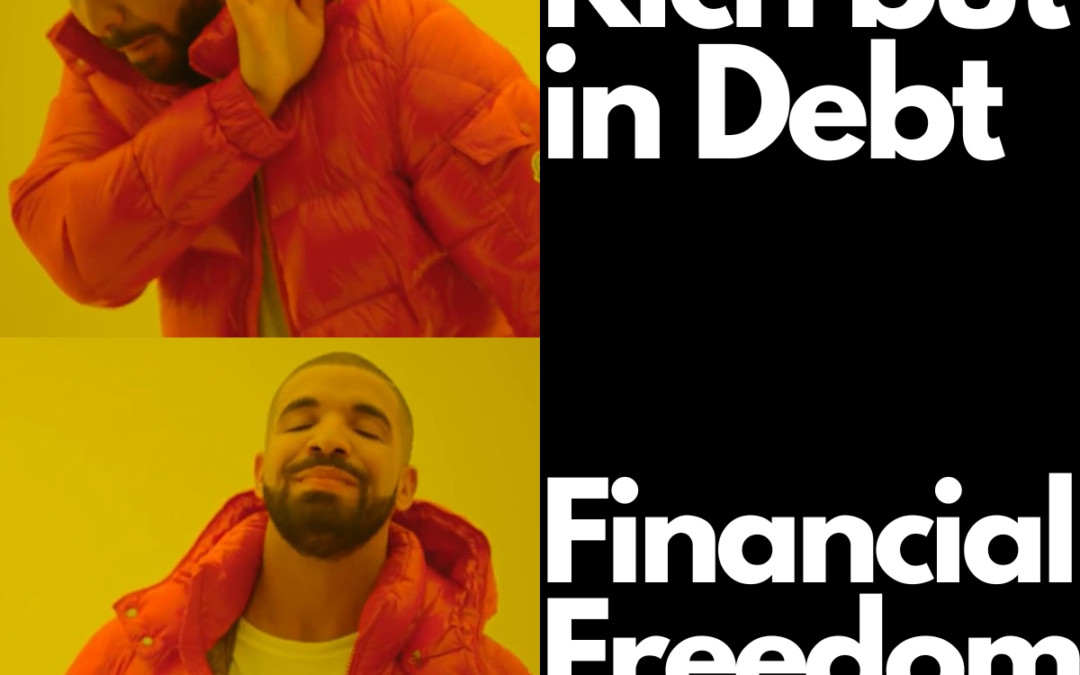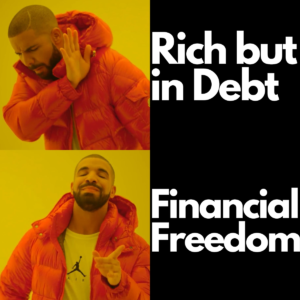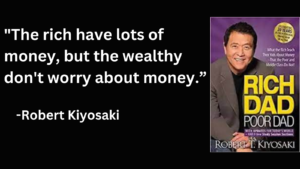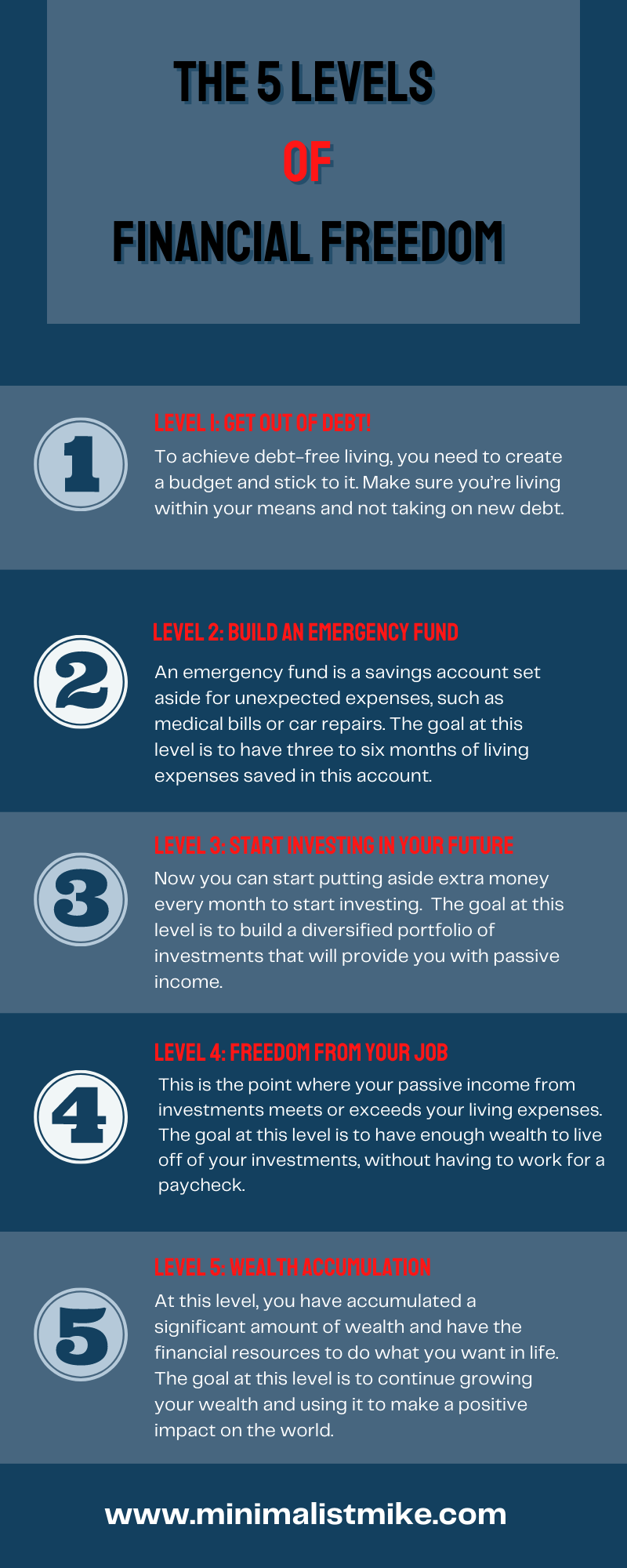
What is the Fastest Way to Achieve Financial Freedom?

Financial freedom is a dream that many people aspire to but few actually achieve. The reasons for this are many, ranging from lack of financial knowledge, to poor spending habits, to simply not making enough money.
However, achieving financial freedom is not an impossible feat. With dedication, hard work, and the right strategy, anyone can achieve financial freedom in a relatively short amount of time. In this article, we will explore the fastest way to achieve financial freedom and what steps you can take to start your journey today.
If you want to achieve financial freedom as fast as possible then you need to be absolutely cut throat with your expenses.
This starts with taking a deep dive into your current financial situation, getting out of debt ASAP, cutting out all unnecessary expenses, increasing your income and consistently investing.
Understanding Your Financial Situation
The first step to achieving financial freedom is to understand your current financial situation. This involves looking at your income, expenses, debts, and assets. It is important to be honest with yourself and have a clear understanding of what you are dealing with in order to make a plan to improve your situation. You can use tools such as a budgeting app or a spreadsheet to track your spending and see where your money is going each month.
Setting Financial Goals
Once you have a clear understanding of your financial situation, the next step is to set financial goals. This could be paying off debt, saving for a down payment on a house, reaching a certain level of savings or retiring early.
It is important to have specific and measurable goals so that you can track your progress and adjust your strategy if necessary. It is also important to set a timeline for each goal to ensure that you stay on track and make the necessary changes to achieve your goal.
Cutting Expenses

One of the easiest ways to improve your financial situation is to cut expenses. This could involve finding ways to save money on bills, such as negotiating with your cable company for a better rate, or cutting out unnecessary expenses, such as subscription services that you no longer use. Every little bit helps and by reducing your expenses, you can free up more money each month to put towards your financial goals.
The easiest way to get started is to use a spreadsheet or Google docs and list out all of your expenses and then separate them into two categories, necessities and discretionary.
Necessities are things that you absolutely need to live such as:
Your rent or mortgage
Bills
Payments on current debt if any
Groceries
Insurance premiums
Transportation
Now list all of your discretionary expenses:
Eating out
Netflix
Car Payment
Etc.
Now take a look at your biggest expense (for most people this will be rent or mortgage) and figure out how you can reduce this.
If you’re really serious about achieving financial freedom fast, then you will need to make some sacrifices which could include moving into a smaller house or apartment or house hacking (renting out a room or part of your house/apartment).
Do this will every item that you have on the list, starting with the largest ones to the smallest ones, and figure out how you can reduce or eliminate each one.
Now that you have your expenses as low as possible, multiple this amount by 12 to give you your yearly spending, then again by 25. This is how much you need to save in order to be completely financially free and live off of the 4% Rule.
Example:
$3,000 x 12 = $36,000
$36,000 x 25 = $900,000
Increasing Income
Once your expenses are cut as low as possible, it’s time to increase your income.
This could involve getting a part-time job, starting a side business, or asking for a raise at your current job.
By increasing your income, you can put more money towards your financial goals and achieve financial freedom faster.
Investing
Now that your expenses are decreased and your income has increased or is at least stable, you should have some money left over every month.
First make sure that you have 3-6 months in a savings account that is paying you interest, like Ally Bank.
Now it’s time to start investing as much as you can every single month. Investing doesn’t have to be complicated and the easiest way to get started is with low cost ETFs and invest in a diversified index fund like the S&P500. For the past 100 years the S&P 500 has gained an average of over 10% a year and also pays quarterly dividends.
You can also set up monthly automatic buys into this index fund which will give you two benefits. The first is that you won’t have to think about it or be tempted to spend it on something else because this money will automatically come out of your checking account. The second is that by buying on a regular monthly basis, you will be Dollar Cost Averaging into the market.
This means that you will buy in all market conditions and will actually buy more shares when the market is down and less shares when the market is up.
Staying Focused
Achieving financial freedom is not a one-time event, but rather a lifelong journey. It is important to stay focused on your goals and make the necessary changes to ensure that you are on track.
This could involve regularly monitoring your expenses and making adjustments as necessary, seeking out new opportunities to increase your income, and seeking out new investment opportunities. Another great way to stay motivated is to here stories and quotes from others who have already achieved your goals.
With dedication, hard work, and the right strategy, anyone can achieve financial freedom in a relatively short amount of time. By understanding your financial situation, setting financial goals, cutting expenses, increasing income, investing and staying focused, you can start your journey towards financial freedom today.

